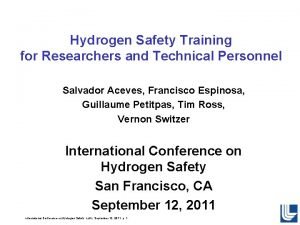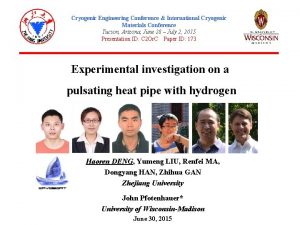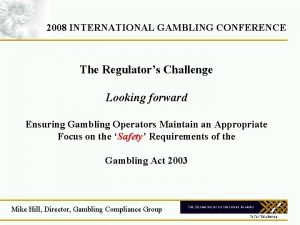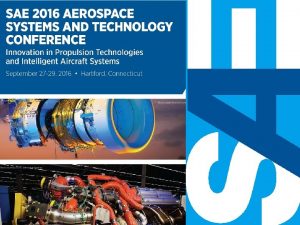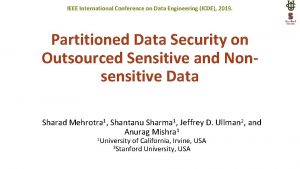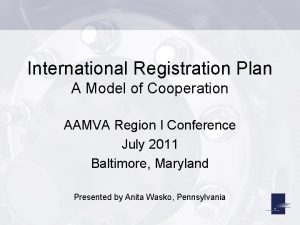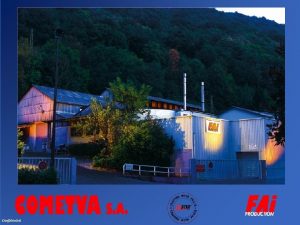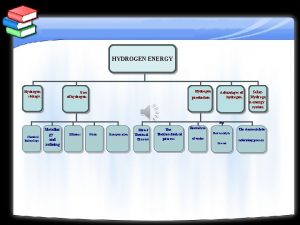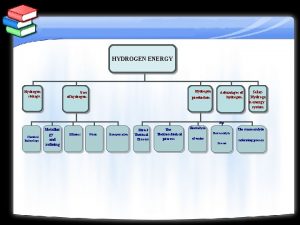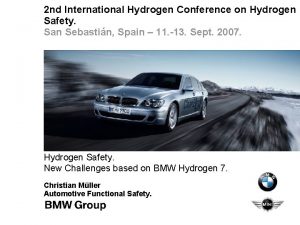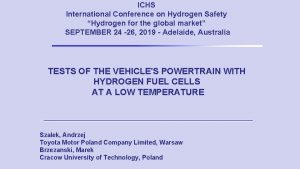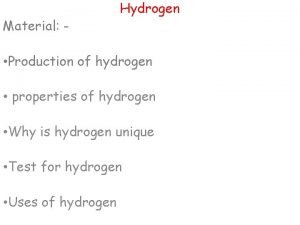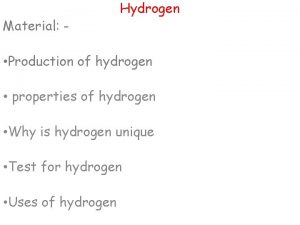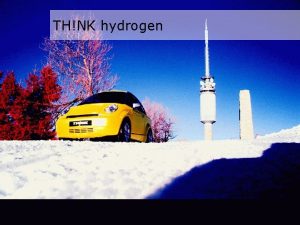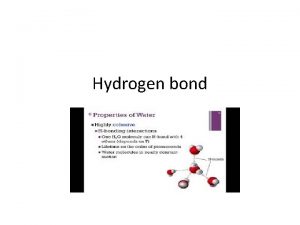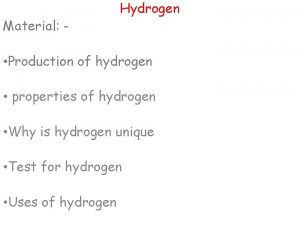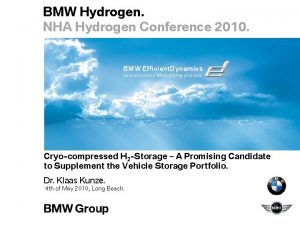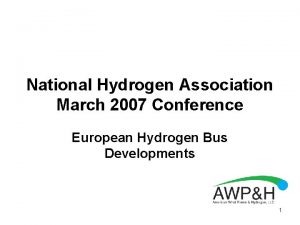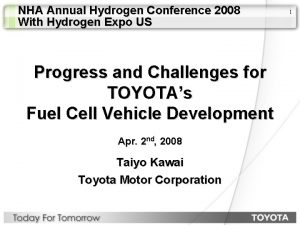2 th International Conference on Hydrogen Safety Miramar














- Slides: 14

2 th International Conference on Hydrogen Safety Miramar Palace, San Sebastian September 11 -13, 2007 RISK ANALYSIS OF THE STORAGE UNIT IN A HYDROGEN REFUELLING STATION M. Casamirra; F Castiglia; L. Corchia; M. Giardina; C. Lombardo; G. Messina Department of Nuclear Engineering, University of Palermo, Italy 1

2 th International Conference on Hydrogen Safety INTRODUCTION Miramar Palace, San Sebastian September 11 -13, 2007 ü Nowadays consumer demand for local and global environmental quality, in terms of air pollution and, in particular, greenhouse gas emissions reduction, may help to drive to the introduction of zero emission vehicles. At this regard, the hydrogen technology appears to have future market valuable potential, especially if renewable primary energy sources coupled with fuel cells are used to obtain the hydrogen. Moreover it is particularly attractive for vehicle applications. ü On the other hand, the use of hydrogen vehicles which requires appropriate infrastructures for production, storage and refuelling stages, presents a lot of safety problems due to the peculiar chemicophysical hydrogen characteristics. ü In particular, the storage problems arise due to low hydrogen density; moreover, its low ignition temperature and flammability, over a wide range of concentrations, makes leaks a significant hazard for fire, especially in confined spaces. ü Therefore, safe at the most practices are essential for the successful proliferation of hydrogen vehicles. 2

2 th International Conference on Hydrogen Safety INTRODUCTION Miramar Palace, San Sebastian September 11 -13, 2007 ü Such practices generally consist in the integrated use of Failure Mode and Effect Analysis (FMEA), HAZard OPerability Analysis (HAZOP) and Fault Tree Analysis (FTA), which constitute well established standards in safety engineering. ü In this work, we present the results of safety analyses obtained by using the FMEA, HAZOP and FTA integrated techniques relevant, for the moment, to high-pressure storage equipment in a hydrogen refuelling station near the city of Eureka, in California. ü As well known, the on-site storage of hydrogen is an important aspect of fuelling station design and construction. In fact the storage systems accomplish two major roles in hydrogen delivery: regulation of delivery flow rate and increased working capacity. ü The study, that is intended to obtain elements for improving safety of the system, can constitute a basis for further more refined works. 3

2 th International Conference on Hydrogen Safety PLANT DESCRIPTION Miramar Palace, San Sebastian September 11 -13, 2007 The reference system consists in a hydrogen power park, to be realized near the city of Eureka, in California, designed at the Humboldt University. This system is foreseen to provide thermal and electrical power as well as gaseous hydrogen for car refuelling. Figure 1. Compression and storage units of the plant. 4

2 th International Conference on Hydrogen Safety PLANT DESCRIPTION Miramar Palace, San Sebastian September 11 -13, 2007 The produced hydrogen feeds a CGH 2 type refuelling station: hydrogen is produced in situ and stored in form of compressed gas by a three-stage compressor and is sent to three storage vessels, respectively, at low (152 bar), medium (220 bar) and high pressure (460 bar). Figure 2. Particular of the compression unit of the plant. This compressor is equipped with internal and external pressure switches that operate based on downstream pressure. The external pressure switch (PS 2), located outside of the compressor, ensures that the compressor switches off only when the storage pressure equals the relevant set point. Moreover, a pressure regulator (PR) in the compression unit reduces unwanted higher pressure gas in process line. 5

2 th International Conference on Hydrogen Safety PLANT DESCRIPTION Miramar Palace, San Sebastian September 11 -13, 2007 The storage vessels are protected by pressure relief devices which help to assure that the maximum allowable pressure is not exceeded. The storage pipelines are equipped with pressure gauges (PG), connected with the pressure transducers (PT), and solenoid valves (SV), actuated through a Programmable Logic Controller (PLC). This unit is also used to control major safety functions of the station, including regulation of the dispenser interactions. Figure 3. Particular of the storage unit of the plant. 6

2 th International Conference on Hydrogen Safety FMEA analysis Miramar Palace, San Sebastian September 11 -13, 2007 As it is known, the FMEA analysis is developed by studying the failure that might affect the system components under consideration. When the failure modes are identified, it is necessary to recognize the associated causes as well as the consequences in the component itself and in the system on the whole, corrective actions have to be suggested to eliminate or reduce the potential for occurrence. Moreover, this analysis uses the occurrence probability and detectability in conjunction with a severity criteria to develop a Risk Priority Number (RPN), a critical indicator which allows to recognize the hazard level of the failures, obtained by multiplying the Severity, Occurrence and Detection ranking levels, and resulting in a scale from 1 to 1000: obviously, a smaller RPN number is the better. The FMEA form, reported in Table 1, refer to some failure modes of the solenoid valves in storage vent safety system. 7

2 th International Conference on Hydrogen Safety FMEA analysis Miramar Palace, San Sebastian September 11 -13, 2007 Table 1. FMEA form relevant solenoid valves. Note that this kind of component presents the higher RPN values. 8

2 th International Conference on Hydrogen Safety HAZOP analysis Miramar Palace, San Sebastian September 11 -13, 2007 The HAZOP analysis allows to perform the study of the process into consideration. This study is performed by analyzing process variables deviations occurring at suitable system “nodes”. A single point P 1, located on the pipeline between compressor and storage units, has been chosen as internal node (see Figure 1). The hydrogen flow rate and pressure have been chosen as parameters to be examined. The analysis allowed to individuate the following Top Events: • hydrogen loss in the environment (TOP 1); • overpressure of the storage vessel (TOP 2). The obtained results, relevant the study of the above described physical parameters deviation are reported in Tables 2 and 3. 9

2 th International Conference on Hydrogen Safety HAZOP analysis Miramar Palace, San Sebastian September 11 -13, 2007 Table 2. HAZOP Analysis in node P 1 relevant the deviations of the storage flowrate parameter. 10

2 th International Conference on Hydrogen Safety HAZOP analysis Miramar Palace, San Sebastian September 11 -13, 2007 Table 3. HAZOP Analysis in node P 1 relevant the deviations of the storage pressure parameter. 11

2 th International Conference on Hydrogen Safety FTA analysis Miramar Palace, San Sebastian September 11 -13, 2007 We confine ourselves to consider only the Top Event indicated as TOP 2, that is: storage vessel overpressure during the hydrogen filling phase. The hypothesized accidental scenario (see figure 4) can be schematized by the following main undesired causes: ü exceeded storage pressure set point; ü PLC failure. Figure 4. Storage vessel overpressure Top Event (TOP 2) undeveloped fault tree Leaving out to describe further details of the accidental scenario for sake of brevity, we report only the frequency of the Top Event 2 obtained applying the STARS code. 12

2 th International Conference on Hydrogen Safety FTA analysis Miramar Palace, San Sebastian September 11 -13, 2007 This frequency is equal to : P(TE) = 2. 9*10 -7 y -1 The number and the maximum order of the Minimal Cut Set (MCS) has been also evaluated. These ones are reported in Figure 5 as histogram, according to the probability of occurrence as well to the cut set order. It is worth to note that there are fourteen MCSs of fifth-order and as much as fortytwo MCSs of seventh-order. This in some way explains the resulting very low Top Event probability. Figure 5. MCS identified by the STARS code. 13

2 th International Conference on Hydrogen Safety CONCLUSION Miramar Palace, San Sebastian September 11 -13, 2007 In the present communication samples of the obtained results of the integrated use of the most effective risk analysis techniques (namely FMEA, HAZOP analyses, and FTA) are reported. These analyses concerned with the high-pressure storage equipment in a hydrogen refuelling station. In particular: ü The FMEA technique evidenced the components exhibiting considerable high potential to failure; ü The HAZOP analysis allowed to individuate two undesirable accidental scenarios, that is: leak of hydrogen in the environment (TOP 1) and overpressure of a storage vessel (TOP 2); ü The FTA analysis, for the moment carried out to deepen the study of only the last undesired event (TOP 2), resulted in a frequency occurrence as low as 2. 9*10 -7 y -1. Therefore, borrowing the accident categorization from nuclear reactor technology, this Top Event behaves as a quite rare limiting fault. 14
 Miramar national cemetery grave locator
Miramar national cemetery grave locator Miramar high school ib program
Miramar high school ib program Somerset academy central miramar
Somerset academy central miramar Caroline cooban army
Caroline cooban army Hydrogen safety training
Hydrogen safety training International cryogenic engineering conference
International cryogenic engineering conference International gambling conference
International gambling conference Sae international conference
Sae international conference Ieee international conference on data engineering
Ieee international conference on data engineering Parvuli dei banner examples
Parvuli dei banner examples International space development conference
International space development conference International telemetry conference
International telemetry conference Aamva international conference
Aamva international conference International ferroalloys conference
International ferroalloys conference Cit healthcare conference 2017
Cit healthcare conference 2017




